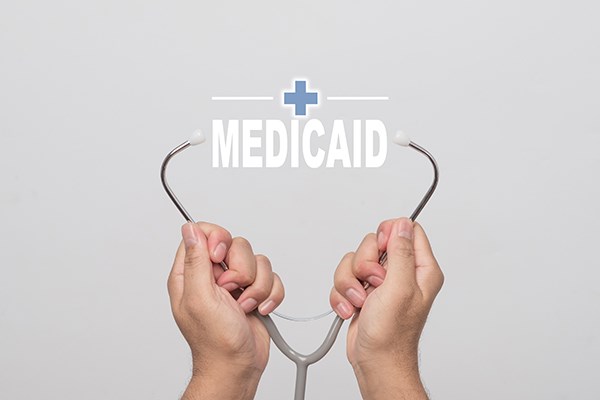Emergency physicians should be fierce advocates for Medicaid expansion
The 2014 expansion of Medicaid under the Affordable Care Act remains deeply controversial. There has been significant examination of repeat ED users who may utilize ED care more frequently once insured. However, most studies have focused on the total number of ED visits rather than acuity.
One measure of acuity is the proportion of visits due to ambulatory care sensitive conditions (ACSCs). ACSCs are medical issues “for which good outpatient care can potentially prevent the need for hospitalization or for which early intervention can prevent complications or more severe disease.” Patients are more likely receiving adequate outpatient care with a greater proportion of non-ACSC ED visits.
The analysis of effects of Medicaid expansion on ED visit acuity used data from 30 EDs in 7 states. Patients in expansion states with an ED visit pre-expansion while uninsured and an ED visit post-expansion after Medicaid enrollment, were compared to demographically similar uninsured patients in non-expansion states.
In expansion states, ED encounters were 29% more likely to result in admission with a 32% increase in non-ACSC admissions. No difference was observed in total ED visits. The authors provide multiple potential explanations for these findings. Expansion may have led to more utilization of outpatient services with ED visits reserved for emergent issues. Alternatively, insurance status could have caused changes in admission decisions. However, the federal law called EMTALA mandates that all patients in the emergency room be stabilized and treated, regardless of ability to pay.
The authors acknowledged the effect that the Medicaid Parity Demonstration Program may have had. This program equalized Medicaid payments for primary care visits with what Medicare pays during the first year of expansion, possibly improving access to primary care. It is unknown whether the end of this program could nullify the observed changes.
Medicaid expansion was successful in at least one dimension: repeat users shifted their ED use toward higher acuity conditions – that is, conditions for which EDs were designed. Additional inquiries remain necessary to determine the longevity of this change, and to further analyze whether these effects truly stemmed from greater access and utilization of outpatient services for low-acuity conditions.
Medicaid expansion has impacted the nature of ED visits in this oft-scrutinized population. As the doctors most intimately involved in caring for these patients, this study suggests that emergency physicians should aggressively advocate for Medicaid expansion.
Abstract: Ladhania R, Haviland AM, Venkat A, Telanf R, Pines JM. The Effect of Medicaid Expansion on the Nature of New Enrollees' Emergency Department Use. Med Care Res Rev. 2019;May 27:1077558719848270. [Epub ahead of print]
We examine changes in emergency department (ED) visit acuity and care intensity for uninsured patients who gained Medicaid insurance in 2014 under the Patient Protection and Affordable Care Act. We use 2013-2015 longitudinal patient visit-level data from 30 EDs across 7 states from an emergency medicine group. We examine changes in ED use by previously uninsured Medicaid patients and patients remaining uninsured who were repeat ED users (≥1 visit before and after expansion) using a propensity-score weighted approach with statistical machine learning to estimate the weights. Compared with those remaining uninsured in nonexpansion states, newly covered Medicaid patients in expansion states showed a 29% relative increase in hospital admissions and 32% increase in admissions for nonambulatory care sensitive conditions with no increases in care intensity. Obtaining Medicaid insurance increased the relative proportion of ED visits requiring hospital admission suggesting increased outpatient access for low-acuity conditions previously addressed with ED care.
PMID: 31132912
EMRA + PolicyRx Health Policy Journal Club: A collaboration between Policy Prescriptions and EMRA
 As emergency physicians, we care for all members of society, and as such have a unique vantage point on the state of health care. What we find frustrating in our EDs - such as inadequate social services, the dearth of primary care providers, and the lack of mental health services - are universal problems. As EM residents and fellows, we learn the management of myocardial infarctions and traumas, and how to intubate, but we are not taught how health policy affects all aspects of our experience in the ED. Furthermore, given our unique position in the health care system, we have an incredible opportunity to advocate for our patients, for society, and for physicians. Yet, with so many competing interests vying for our conference education time, advocacy is often not included in the curricula. This is the gap this initiative aims to fill. Each month, you will see a review of a new health policy article and how it is applicable to emergency physicians.
As emergency physicians, we care for all members of society, and as such have a unique vantage point on the state of health care. What we find frustrating in our EDs - such as inadequate social services, the dearth of primary care providers, and the lack of mental health services - are universal problems. As EM residents and fellows, we learn the management of myocardial infarctions and traumas, and how to intubate, but we are not taught how health policy affects all aspects of our experience in the ED. Furthermore, given our unique position in the health care system, we have an incredible opportunity to advocate for our patients, for society, and for physicians. Yet, with so many competing interests vying for our conference education time, advocacy is often not included in the curricula. This is the gap this initiative aims to fill. Each month, you will see a review of a new health policy article and how it is applicable to emergency physicians.



